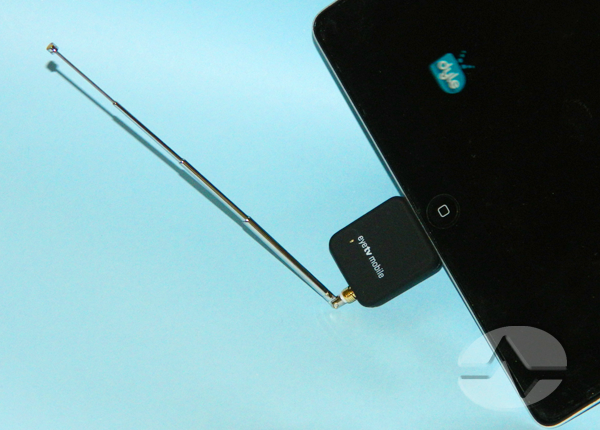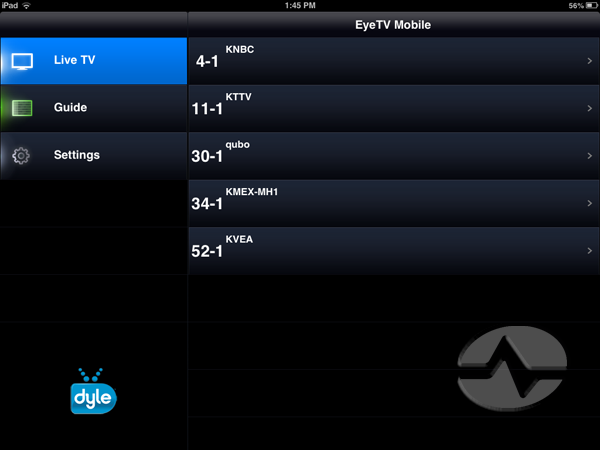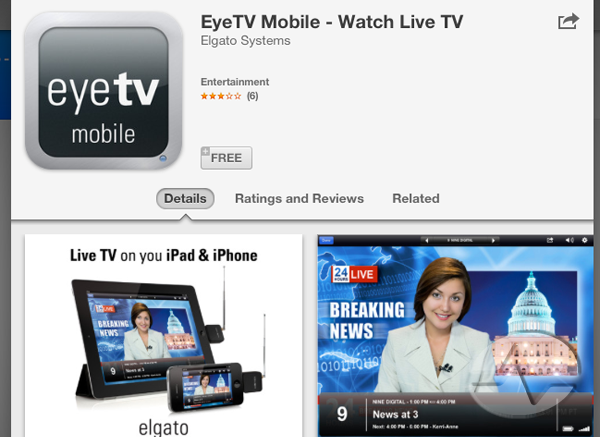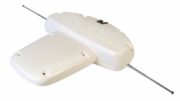Real, live TV on your mobile device with no data usage. It’s what we thought we’d all get when we bought those portable TVs that were such common stocking stuffers in the past few years. The work just fine if you’re standing still, but the moment you move, the party’s over. Well, the party’s back on with Elgato’s eyeTV Mobile accessory for iOS devices. Let’s see how it works.

The eyeTV module itself is small, a little bit bigger than a short stack of quarters. A truly minuscule monopole antenna attaches to it. Unfortunately, the device is simply too small to use a standard f connector for its antenna, although if you are willing to sacrifice the included desktop antenna and you’re handy with a soldering iron it wouldn’t be too hard to make an adapter if need be.
The module charges via USB and its solid red light changed to green within a few hours, indicating a full charge. It’s a good idea to keep this bad boy charging, however; I noticed that battery life 48 hours later was significantly decreased even though I didn’t use it.

Plug the eyeTV into the dock connector for the first time (We’ll test Lightning connector support in a future article) and the device prompts you to go to the App Store to download the free app. In later tests it gave us a polite pop-up window asking if it was OK to launch the app. App installation is typically easy, with the more-or-less standard boilerplate full of text that most of us agree to without reading. (Come on, you know you do.)
Once the app figures out your location with the help of the device’s built-in location sensors, it does an automatic scan for channels. This took only a few seconds and yielded several channels in the Los Angeles area. I am sure that if I had been outdoors for this review I would have found even more. A new scan can be done easily.

From there, it’s fairly straightforward. There is a list of channels and, if guide data is available, an onscreen guide. I was surprised to find no guide data available in Los Angeles. Tap on a channel to start watching.
Overall quality is not going to be mistaken for HD, even with a Retina Display iPad. It’s not the device’s fault, though; Mobile DTV is designed around a standard-definition model. I guess if you’re going to be using it on a smaller device it doesn’t matter. The picture quality was better than the 300-line LCD of my cheap portable, though, and the picture was clear and free of interference even as I walked around the room.

I was pleasantly surprised to see quite a few built-in features. Zoom and closed captioning were easy to find, and what’s that? Believe it or not, the eyeTV has limited DVR functionality as well. You can’t schedule recordings or keep them, but while watching you have access to pause, rewind and fast forward. This was unexpected and yet it’s something I take for granted in the house. There’s also the almost-mandatory share button that lets you tell all your friends, followers or stalkers what you’re doing.
I watched live TV with this device for about half an hour without any blips whatsoever, but other than walking around the office I didn’t take it very far. In a future article we’ll take the show on the road and see how well it performs in a moving car (while someone else is driving, of course.)




